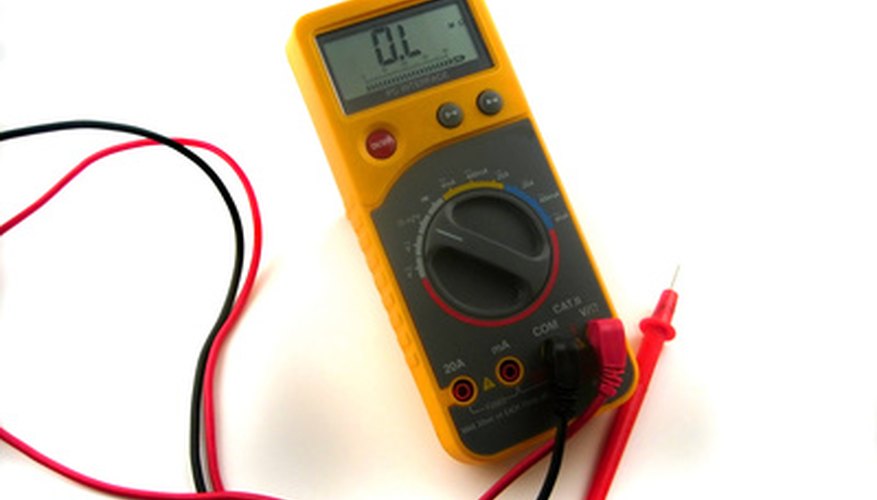Small electric motors operate a wide variety of electrical devices, such as remote-control models, children’s railroad sets and computers. They generally operate on low-voltage electricity — 6 to 24 volts — and are powered by batteries or a transformer that reduces 110 volts to the required low voltage. There are few, if any, serviceable parts in small electric motors, and generally it’s less expensive to buy a replacement rather than attempt a repair. However, if you’re motor isn’t working, use a multimeter to test it before deciding to replace it. It’s possible the problem could be the wring or the power source and not the electric motor.
- Small electric motors operate a wide variety of electrical devices, such as remote-control models, children’s railroad sets and computers.
- There are few, if any, serviceable parts in small electric motors, and generally it’s less expensive to buy a replacement rather than attempt a repair.
Look at the label on the electric motor to determine the voltage it needs to operate. Make a note of the voltage.
Find the two small metal terminals on the electric motor. They are near the back and have two coloured wires; usually red and black, attached to them.
Turn on the power unit that supplies electricity to the electric motor. You need to check if electricity is getting to the motor.
Turn on the multimeter. Ensure it is set to measure volts as multimeters. It can also measure amperes and ohms.
- Find the two small metal terminals on the electric motor.
- It can also measure amperes and ohms.
Place the copper sensors running from the multimeter onto the metal terminals on the small electric motor. The sensor on the end of the red wire from the multimeter touches the terminal that has a red wire attached. The sensor on the end of the black wire from the meter touches the terminal that has a black wire attached. Ensure you don’t touch the outer casing of the electric motor, as you may get a false reading.
- Place the copper sensors running from the multimeter onto the metal terminals on the small electric motor.
- The sensor on the end of the red wire from the multimeter touches the terminal that has a red wire attached.
Check the multimeter measurement. It measures the same, or similar, to the voltage you noted from the label on the electric motor if power is reaching the motor. If you have a reading and your motor isn’t operating, it’s certain the motor is the problem and needs replacing. If you don’t get a measurement, then it means power isn’t reaching the motor, so it may not be the motor that’s faulty.
Check the power source. Locate the two terminals and place the sensors from the end of the multimeter wires onto the two terminals as before: red on the terminal that has the red wire attached and black on the terminal that has the black wire attached.
Read the multimeter display. It reads the same or similar voltage as you noted earlier if the power source is producing electricity. If you get a reading, then you know that the wiring is faulty because you’ve already found that electricity isn’t reaching the motor. You need to replace the wiring before your motor will work. If you don’t get a reading, or the reading is very low, you have a problem with the power source rather than the motor.
- Locate the two terminals and place the sensors from the end of the multimeter wires onto the two terminals as before: red on the terminal that has the red wire attached and black on the terminal that has the black wire attached.
- If you get a reading, then you know that the wiring is faulty because you’ve already found that electricity isn’t reaching the motor.
